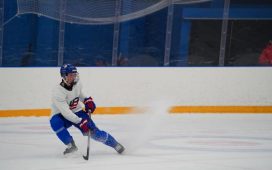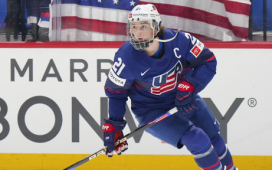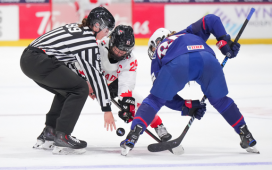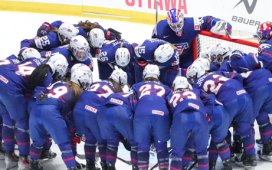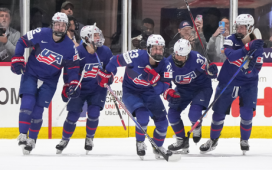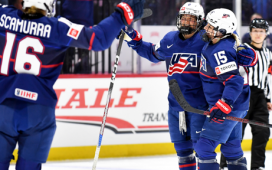The NHL Players’ Association had the chance to use the salary cap escalator to increase the spending limit by five percent. It’s believed, however, the NHLPA held firm at 0.5 percent. The resulting cap is roughly $1.5 million lower than projected, and that only hurts the players.

As expected, Sergei Bobrovsky and Artemi Panarin will meet with the Florida Panthers Monday, the second day of the free-agent courting period. They two sides are strictly forbidden from talking about dollars until July 1, but when they do, Bobrovsky, Panarin and the rest of the league’s free agents will find that teams will have less to spend on them than everyone thought. And for that they should be hopping mad.
After all, the players who are looking for new contracts have been taking it on the chin when it comes to escrow payments for some time now. And this summer, when it is their time to cash in, they have been sold out by their so-called union brothers, who directed their NHL Players’ Association to keep the cap lower than it should have been for the 2019-20 season. When the NHL and the NHLPA set the salary cap for the 2019-20 season at $81.5 million on Saturday, it did not come as a huge shock to the league’s 31 GMs. They had been preparing for the cap to be substantially lower than the $83 million it was projected to be not that long ago.
But what that did was pit players against one another, with those under contract in one camp and those seeking contracts in another. The former want the salary cap to be as low as possible, which will make for lower escrow payments. But that comes at the expense of players such as Panarin and Bobrovsky and all those others seeking contracts, who have had to grin and bear it in recent years in terms of escrow payments and are now getting the double whammy of having less money in the system because of the low cap number.
As part of the terms of the collective bargaining agreement, the players can trigger an escalator of up to five percent over the number that is based upon projected revenues. And until two summers ago, that’s exactly what the NHLPA did, which pushed the salary cap to its maximum level. But in 2017 and 2018, that escalator was reduced to 1.5 percent and in 2019, it is believed the NHLPA held the line at 0.5 percent.
Yes, that will put a dent in escrow payments, which averaged out to a final amount of about 9.5 percent this past season. But not that much. This move might reduce escrow payments slightly, which is great for players who already have contracts, but disastrous for players whose contracts are up.
Actually, it’s no good for anybody, including the teams that have to find a way to jam the same number of players into a number that is smaller than expected. It hurts fans who lose players in those markets and it hurts everyone from star players to grunts, the latter of whom face the prospect of being replaced by a prospect who is under contract for minimum wage. And once again, the salary cap causes more problems than it solves.
Part of the problem here is the fundamental lack of understanding the players have when it comes to escrow. All we keep hearing about is how escrow is going to be a major issue in the next CBA. Well, guess what? Escrow is not even an issue. It’s actually a byproduct of the real issue, which is the system that is currently in place. There’s a good section of agents out there who believe the players should extract as much money as they possibly can out of the system and deal with the escrow payments that ensue. If the players want lower escrow payments, they can either take a lower salary cap or a rollback in salaries in the next CBA. What is it about that concept so difficult for so many of them to understand? Sure, players want their actual pay to reflect the amount they signed for in their contracts. But are they really that unaware that they can’t grasp the concept of what makes this system work? They’re still getting 50 percent of the revenues, which is exactly what they agreed to in the CBA.
There is one way to at least level the playing field here. It is one espoused by longtime agent Anton Thun, among others. Thun argues that instead of setting the escalator number each year, the NHLPA would be better served by establishing the number for each year at the beginning of the CBA. Whether that’s zero percent, three or five, at least players will know going into their contract years that they are going to be treated the in the same manner as previous players have been.
“Doing five one year and then doing 1.5 and 0.5 doesn’t make sense,” Thun said. “The only people who get burned in this system are the players.”
Want more in-depth features, analysis and an All-Access pass to the latest content? Subscribe to The Hockey News magazine.
